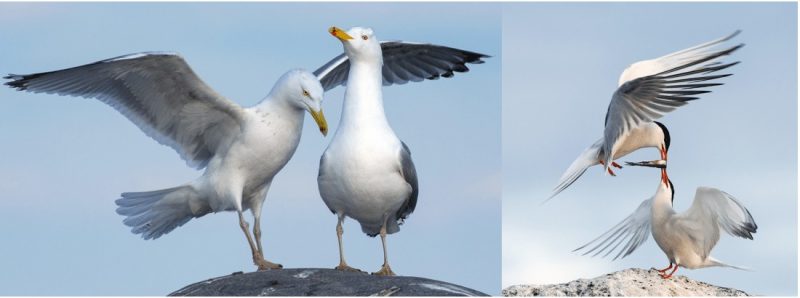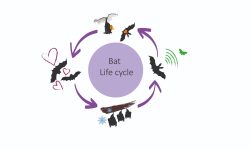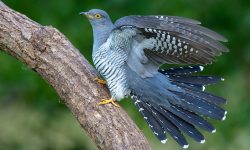Michigan’s unique location along the Great Lakes makes it a hotspot for gull diversity. From common year-round residents to rare winter visitors, the state offers birdwatchers and nature enthusiasts the chance to observe up to 22 distinct gull species. In this article, we’ll explore these gulls in detail, examining their physical traits, behavior, seasonal presence, and where to find them in the state.

Why Michigan Is a Gull-Watching Haven
With over 3,000 miles of shoreline along Lakes Superior, Michigan, Huron, and Erie, Michigan provides an abundance of food sources and nesting habitats. The state’s landfills, harbors, and open beaches serve as reliable gathering spots for gulls throughout the year. Seasonal migrations further contribute to the state’s gull diversity, bringing both common and accidental species into view.
Understanding Gull Diversity in Michigan
Gulls belong primarily to the genus Larus, with some species under Chroicocephalus and other genera. Their plumage changes dramatically as they age, making gull identification a skill that takes practice.
Overview of the 22 Gull Species in Michigan
Let’s explore each gull species documented in Michigan, focusing on how to identify them, their habits, and when and where you can spot them.
1. Ring-billed Gull (Larus delawarensis)
Identification
A medium-sized gull with a white head and body, pale gray back, yellow legs, and a yellow bill marked with a distinct black ring. Juveniles are mottled brown and take up to three years to reach adult plumage.
Status in Michigan
This is the most common gull in the state. It breeds widely across the Great Lakes and inland waters, and many individuals remain year-round, especially in urban areas.
Behavior and Diet
Highly adaptable, Ring-billed Gulls thrive in both natural and human-altered habitats. They forage in parking lots, landfills, lakeshores, and fields. Diet includes fish, insects, garbage, and human food scraps. Known for their boldness and noisy calls like “klee-ow.”
Breeding
Breeds in dense colonies on islands or rooftops from late April. Nests are shallow and lined with grass; both parents care for the young until fledging.
Conservation
Once in decline, now abundant and listed as Least Concern. Occasionally seen as a nuisance near landfills or airports due to large flocks.
Best Places to See in Michigan
-
Muskegon Wastewater Facility
-
Belle Isle Park
-
Tawas Point State Park
-
Anywhere with open water or parking lots
2. Herring Gull (Larus argentatus)
Identification
A large, broad-winged gull with a pale gray back, white underparts, pink legs, and a heavy yellow bill tipped with a red spot. Juveniles are brown and heavily streaked, maturing over four years.
Status in Michigan
Common throughout the year, especially abundant in winter along the Great Lakes. Often nests on rooftops and islands in urban and industrial areas.
Behavior and Diet
An assertive scavenger known for kleptoparasitism—stealing food from other birds. Feeds on fish, refuse, carrion, and invertebrates. Seen in flocks at landfills, harbors, and piers.
Breeding
Breeds in colonies on remote islands or urban structures. Builds a simple nest of vegetation. Both parents share incubation and chick-rearing duties.
Conservation
Populations have stabilized after historical declines due to egg collecting and pollution. Now considered Least Concern, but still vulnerable to plastic ingestion and human disturbance.
Best Viewing Locations
-
Lake Michigan and Lake Superior shorelines
-
Detroit River area
-
Grand Haven, Marquette, and Escanaba piers
3. Great Black-backed Gull (Larus marinus)
Identification
The largest gull in the world, easily recognized by its jet-black back and wings, white head and underparts, pink legs, and massive yellow bill with a red spot. Juveniles are bulky and heavily mottled brown.
Status in Michigan
An uncommon winter visitor, mainly seen along Lakes Erie and Huron, especially near open water and harbor areas. Does not breed in Michigan.
Behavior and Diet
A dominant predator and scavenger, known to prey on smaller birds and steal food. Often solitary or in small groups, it commands space within mixed gull flocks.
Conservation
Globally stable and widespread along North Atlantic coasts. Michigan sightings have increased slightly in recent decades, but it remains a rare inland species.
Best Places to See
-
Lake Erie Metropark
-
Port Huron waterfront
-
Monroe Power Plant outflows in winter
4. Lesser Black-backed Gull (Larus fuscus)
Identification
Medium-sized gull, slightly smaller than the Herring Gull, with a dark slate-gray back, yellow legs, and a yellow bill marked with a red spot. Juveniles are dark and strongly patterned.
Status in Michigan
Once rare, now increasingly reported during fall and winter, especially along the Great Lakes and large inland reservoirs. Not known to breed locally.
Behavior and Ecology
Often forages with mixed gull flocks. Diet includes fish, invertebrates, and waste. Typically less aggressive than Great Black-backed Gulls but competitively adaptable.
Conservation and Range Shift
A European-native species expanding into eastern North America over the past few decades. Now regular in Michigan, though still considered uncommon.
Viewing Locations
-
Muskegon Wastewater System
-
Lake Erie shoreline
-
Bay City and Tawas area during migration
5. Glaucous Gull (Larus hyperboreus)
Identification
A very large, pale gull with frosty white plumage, light gray back, pink legs, and a thick, all-yellow bill with no black markings. Juveniles are uniformly pale brown with minimal contrast.
Status in Michigan
A rare but regular winter visitor, typically found from late November through March along the Great Lakes, especially near unfrozen water.
Behavior and Habitat
Often associates with Herring Gulls at landfills, harbor edges, and open lakefronts. Moves slowly and deliberately, showing less aggression than similarly sized gulls.
Conservation
Stable Arctic breeder. Though uncommon, it’s one of the more expected “white-winged gulls” in Michigan winters.
Best Places to Spot
-
Sault Ste. Marie area
-
Marquette and Lake Superior shoreline
-
Monroe and Detroit River region in winter
6. Iceland Gull (Larus glaucoides)
Identification
A medium-sized, small-headed gull with soft gray back, white underparts, pale pink legs, and translucent white wingtips, giving it a ghostly look in flight. Juveniles are pale brown and lightly marked.
Status in Michigan
A scarce winter visitor, mostly seen from late fall through early spring, especially along the Great Lakes and in large gull roosts.
Behavior
Often forages quietly among mixed flocks, especially with Herring and Glaucous Gulls. Less aggressive and more graceful in flight.
Subspecies and Taxonomy
Includes two main forms: the “Kumlien’s Gull” (L. g. kumlieni) seen most often in Michigan, and Thayer’s Gull, which is sometimes treated as a separate species.
Top Viewing Areas
-
Lake Michigan piers (St. Joseph, Holland)
-
Saginaw Bay
-
Muskegon Wastewater lagoons in winter
7. Laughing Gull (Leucophaeus atricilla)
Identification
A medium-sized gull with a distinctive black hood during breeding season, dark red bill, gray back, and black wingtips. In nonbreeding plumage, the hood fades to smudgy gray around the head.
Status in Michigan
A rare spring and summer migrant, typically observed after strong storms or along southern Lake Erie. Most records are from late May to early July.
Habitat and Behavior
Primarily a coastal species, it favors brackish lagoons and salt marshes, which are limited in Michigan. Usually travels alone or in small groups, often associating with Ring-billed Gulls when inland.
Best Chance to Spot
-
Pointe Mouillee State Game Area
-
Lake Erie Metropark
-
After coastal storm systems or hurricanes moving inland
8. Franklin’s Gull (Leucophaeus pipixcan)
Identification
A small, graceful gull with a black hood in breeding plumage, white eye crescents, and often pinkish underparts. The bill and legs are dark red to black. Nonbreeding birds lose the full hood but retain facial markings.
Status in Michigan
A rare but regular migrant, seen mostly during spring and fall migration, especially around inland lakes and marshes. Most records occur in April–May and October.
Ecology and Range
Breeds in prairie wetlands of central North America, particularly in the Dakotas and Manitoba. Does not breed in Michigan but may pause briefly in large flocks of Bonaparte’s Gulls.
Where to Look
-
Allegan State Game Area
-
Saginaw Bay
-
Shiawassee National Wildlife Refuge during peak migration
9. Bonaparte’s Gull (Chroicocephalus philadelphia)
Identification
A small, graceful gull with a slender black bill, pale gray back, white underparts, and white outer wings. In breeding season, it shows a crisp black hood; in winter, only a dark spot behind the eye remains.
Status in Michigan
Common during spring and fall migration, especially on inland lakes, rivers, and coastal marshes. Occasional in early winter on unfrozen water but does not breed locally.
Behavior and Foraging
Unlike most gulls, it feeds like a tern, catching flying insects mid-air or picking prey delicately from the water’s surface. Often found in flocks, especially near emergent insect hatches.
Best Places to Spot
-
Kensington Metropark lakes
-
Lake Erie and Lake St. Clair
-
Saginaw Bay during peak migration
10. Little Gull (Hydrocoloeus minutus)
Identification
The smallest gull in the world, notable for its black underwings, pale gray back, white body, and short, rounded wings. Breeding adults show a faint black hood; juveniles are mottled with a distinctive dark “M” pattern on the wings.
Status in Michigan
Rare but regular during spring migration, especially mid-April to mid-May. Typically found in small numbers within large flocks of Bonaparte’s Gulls.
Behavior
Feeds on small invertebrates, often by skimming the water or catching insects in flight. Shy and quick-moving, making it harder to spot despite its striking wing pattern.
Best Places to Look
-
Lake Erie Metropark
-
Tawas Point during spring
-
Muskegon Wastewater lagoons with migrant flocks
11. Black-headed Gull (Chroicocephalus ridibundus)
Identification
Resembles Bonaparte’s Gull but is slightly larger, with a dark red bill and legs, and a more extensive chocolate-brown hood in breeding plumage (not truly black). In winter, only a dark ear spot remains.
Status in Michigan
A very rare and accidental visitor, usually appearing in late fall or winter among flocks of Bonaparte’s or Ring-billed Gulls. Most sightings occur near the Great Lakes shoreline.
Conservation and Range
Common across Europe and Asia, but still rare in North America. Records in the eastern U.S. are slowly increasing, likely due to vagrancy or expanding winter range.
Best Chance to Spot
-
Lake Erie Metropark
-
Monroe Harbor
-
With careful scanning during migration or winter storms
12. Mew Gull (Larus canus)
Identification
A small, rounded-headed gull with a plain yellow bill (no markings), pale gray back, white underparts, and dark eyes. Legs are greenish to yellow. Often mistaken for a small Ring-billed Gull but lacks the bill ring.
Status in Michigan
Very rare winter visitor, occasionally spotted along Great Lakes shorelines or inland reservoirs. Most records are single birds mixed within flocks of Ring-billed and Herring Gulls.
Behavior and Notes
Quiet and less aggressive than larger gulls. North American populations breed in Alaska and western Canada, with rare wanderers reaching the Great Lakes.
Best Chance to Spot
-
Muskegon and Holland piers
-
Sault Ste. Marie waterfront
-
Winter gull flocks along Lake Michigan
13. California Gull (Larus californicus)
Identification
Intermediate in size between Ring-billed and Herring Gulls, with a gray back, yellow legs, and a yellow bill featuring both red and black spots near the tip. Adults have dark eyes and a clean white head in summer.
Status in Michigan
A rare vagrant, mostly observed in late fall and winter along the Great Lakes. Sightings are sporadic but increasing slightly, often involving single birds mixed with large gull flocks.
Behavior and Ecology
More typical of western North America, it breeds near saline lakes like the Great Salt Lake. Highly opportunistic, feeding on fish, insects, and refuse.
Best Places to Look
-
Muskegon Wastewater lagoons
-
Lake St. Clair and Lake Erie shorelines
-
Detroit River in November–January
14. Slaty-backed Gull (Larus schistisagus)
Identification
A very large, powerful gull with a dark slate-gray back, broad white tertial crescents, pink legs, and a heavy yellow bill with a red spot. Appears bulkier than a Herring Gull with distinctively pale eyes.
Status in Michigan
An extremely rare vagrant from East Asia. Only a few confirmed records in the Great Lakes region, typically in winter among mixed gull flocks.
Behavior and Range
Breeds in northeastern Russia and winters along Pacific coasts. Occasionally wanders inland, likely blown off-course during migration or storms.
Best Chance to Spot
-
Muskegon pier (with careful ID work)
-
Lake Erie shoreline in midwinter
-
Within large winter gull concentrations
15. Sabine’s Gull (Xema sabini)
Identification
A striking small gull with triangular black, white, and gray wings, a forked tail, and a black head in breeding plumage. Its delicate, tern-like flight and crisp wing pattern make it unmistakable.
Status in Michigan
A rare pelagic migrant, mostly seen during fall migration, especially after storms over the Great Lakes. Usually solitary or in small numbers among flocks of Bonaparte’s Gulls.
Ecology and Behavior
Breeds in the high Arctic and migrates over the Atlantic. Forages at sea or along open water, catching insects and small fish. Unlike other gulls, it spends most of its life far from shore.
Best Chance to Spot
-
Lake Huron or Lake Erie after strong fall storms
-
Tawas Point or Whitefish Point during September–October
16. Yellow-legged Gull (Larus michahellis)
Identification
Similar to Herring Gull but with a darker gray back, bright yellow legs, and a thicker yellow bill with a prominent red spot. Eyes are often pale with a reddish orbital ring.
Status in Michigan
An extremely rare vagrant from southern Europe and the Middle East. Only a handful of potential sightings in eastern North America; Michigan reports are exceptionally rare and typically require photo confirmation.
Behavior and Range
Breeds around the Mediterranean and has gradually expanded its range northward. Its presence in North America is likely due to trans-Atlantic vagrancy.
Best Chance to Spot
-
Large gull flocks along Lake Michigan or Erie in winter
-
With careful comparison to Herring Gulls
17. Vega Gull (Larus vegae)
Identification
Closely resembles a Herring Gull but has a darker gray mantle, streaked head in winter, and pale pink legs. Bill is heavy with a red spot, and eyes are usually pale.
Status in Michigan
Extremely rare vagrant from northeastern Asia. Only a few unconfirmed or hypothetical reports in the Great Lakes region. Identification is challenging due to similarity with Herring and hybrid gulls.
Behavior and Range
Breeds in Siberia and winters along the Pacific coast of Asia. Rare individuals may reach Alaska or western Canada; inland records are exceptionally scarce.
Best Chance to Spot
-
Winter gull flocks along Lake Michigan or Huron
-
Requires expert-level ID skills and photographic evidence
18. Ross’s Gull (Rhodostethia rosea)
Identification
A small, elegant Arctic gull with pale pinkish underparts, a black collar in breeding plumage, and a wedge-shaped tail. Wings are narrow and pointed, giving it a tern-like flight.
Status in Michigan
An exceptionally rare vagrant, with only a few historic records in the Great Lakes region. Sightings are unpredictable and typically attract national attention.
Ecology and Range
Breeds in northeastern Siberia and migrates to Arctic seas. Typically observed near pack ice; inland records are linked to strong storm systems.
Best Chance to Spot
-
Highly unlikely, but theoretically possible near Lake Superior
-
Watch during late fall or early winter after Arctic storm events
19. Kumlien’s Gull (Larus glaucoides kumlieni)
Identification
A pale, medium-large gull, intermediate between Iceland and Thayer’s Gulls. Features include a light gray back, variably gray-marked wingtips, pink legs, and a pale bill with a red spot in adults. Eye color varies from dark to pale.
Status in Michigan
A regular but scarce winter visitor, often seen from December through March. Most records come from Great Lakes shorelines or landfill gull roosts.
Taxonomy
Considered a subspecies of Iceland Gull, though some authorities treat it as part of a clinal spectrum with Thayer’s Gull.
Where to Look
-
Muskegon Wastewater lagoons
-
Lake Erie Metropark
-
Sault Ste. Marie during peak winter
20. Thayer’s Gull (Larus glaucoides thayeri)
Identification
A medium to large gull with a pale gray back, dark gray to blackish wingtips, pink legs, and dark eyes. Juveniles are brownish and often resemble Herring or Kumlien’s Gulls, making identification challenging.
Status in Michigan
Rare but regular winter visitor, often mixed in with Herring and Iceland Gulls from December through February, especially along Great Lakes shorelines.
Taxonomic Note
Formerly considered a full species, now treated as a subspecies of Iceland Gull, part of a complex clinal variation with Kumlien’s.
Best Places to Spot
-
Lake Michigan piers (Muskegon, Holland)
-
Detroit River and Lake Erie
-
Marquette waterfront in winter
21. Heermann’s Gull (Larus heermanni)
Identification
A striking West Coast gull with slate-gray body, white head, black tail, and a bright red bill tipped with black. Nonbreeding birds may show dusky heads. Legs are black.
Status in Michigan
An exceptionally rare vagrant, with only a few inland records in eastern North America. Any Michigan sighting would be highly unusual and noteworthy.
Range and Behavior
Breeds along the Pacific Coast from California to Mexico. Strong post-breeding dispersal occasionally brings individuals far inland, especially after storms.
Best Chance to Spot
-
Purely accidental; most likely after rare vagrancy events in late summer or fall
-
Watch for lone birds in mixed flocks at lakeshores
22. Black-tailed Gull (Larus crassirostris)
Identification
A medium-sized East Asian gull with a gray back, white head and underparts, yellow legs, and a distinct black band on the tail. The bill is yellow with a red and black tip. Eyes are dark with a prominent red orbital ring.
Status in Michigan
An extraordinarily rare vagrant, with only a handful of confirmed records in North America, mostly along the Atlantic Coast. Any occurrence in Michigan would be exceptional and likely linked to storm-driven displacement.
Range and Behavior
Common in coastal Japan, Korea, and China, where it breeds on rocky islands. Highly coastal in habits; rarely ventures inland except under extreme weather or dispersal events.
Best Chance to Spot
-
No reliable locations; any Michigan record would be a major rarity
-
Watch carefully during late summer storms in large gull flocks
How to Tell Similar Gull Species Apart
Michigan’s gull diversity means birders must learn to identify subtle differences:
Key Field Marks to Focus On
-
Leg color (pink vs. yellow)
-
Bill shape and markings
-
Mantle (back) shade
-
Eye color and orbital ring
-
Wingtip patterning
Age-Related Plumage Challenges
Gulls undergo several molt cycles over 3-4 years. First-year birds often look completely different from adults. Learning these age-related variations is crucial for accurate ID.
Where to See Gulls in Michigan
Some of the best places to observe gulls in the state include:
Great Lakes Shorelines
-
Lake St. Clair Metropark
-
Tawas Point State Park
-
Muskegon Wastewater Treatment Facility
Inland Locations
-
Landfills near Detroit and Grand Rapids
-
Open water reservoirs and sandpits
-
Agricultural fields during migration
Human Impact on Gull Populations
Gulls thrive in urban and human-altered environments. However, they also suffer from:
-
Plastic ingestion
-
Habitat destruction
-
Disease from contaminated food sources
Proper waste management and shoreline protection are essential for maintaining healthy gull populations.
The Role of Gulls in Ecosystems
Gulls are scavengers and opportunists, helping to clean up organic waste. They also serve as indicators of ecosystem health, with shifts in their numbers often signaling environmental changes.
Resources for Birdwatchers
-
eBird: Track gull sightings in real-time
-
Merlin ID App: Photo and sound-based species identification
-
Michigan Audubon: Birding maps and field trip opportunities
Conclusion
The gulls of Michigan represent a surprising and rich field of observation for bird enthusiasts. Whether you’re scanning a landfill for a rare visitor or enjoying the cries of Ring-billed Gulls on a summer beach, understanding these birds brings you closer to the rhythms of Michigan’s natural world. With practice, patience, and a good field guide, even the most challenging gull ID becomes an enjoyable puzzle.






